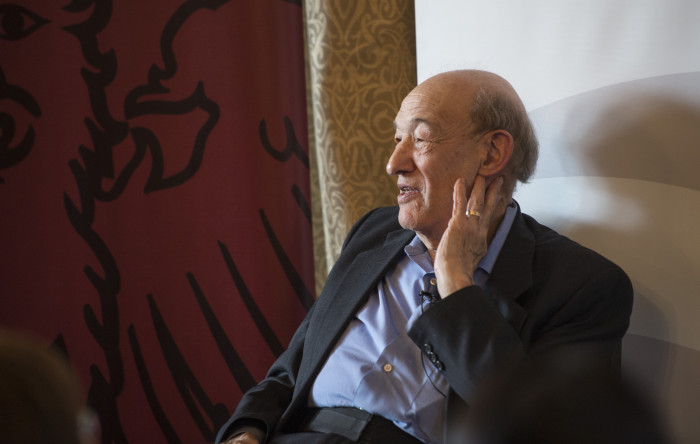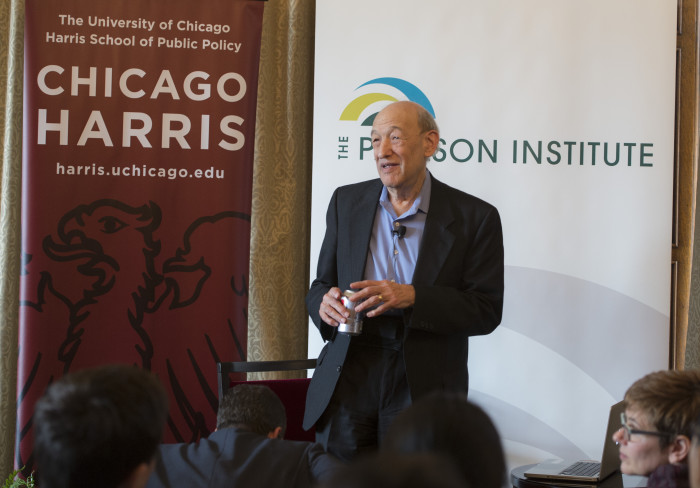
On the surface, China-Japan relations are visibly strained, with little prospect for thawing anytime soon. But, to properly understand the Sino-Japanese relationship, one must consider the historical basis for such tension, argued Harvard Professor Emeritus Ezra Vogel at a Paulson Institute Contemporary China Speakers Series event on the University of Chicago campus.
In fact, the two countries have influenced each other significantly more than each might willingly admit, Vogel pointed out. Much of Japanese culture—including the written language, Confucian ideals, city planning techniques, and Buddhist influences—came originally from China. Even today, Japanese schoolchildren grow up learning concepts native to China. According to Vogel, in the early days of Japanese diplomatic missions to China, representatives would simply engage in written conversations, scribbling back and forth to each other to overcome the language barrier.

China-Japan relations frayed considerably in the span of time bookended by the start of the First Sino-Japanese War in 1894 and the end of World War II in 1945. Afterward, Mao Zedong managed to stir up nationalism in the early days of Communist China by propagating anti-Japanese sentiments, a tactic that Vogel noted remains in use among today’s Chinese leadership. While current Chinese president Xi Jinping “is not afraid to push the anti-Japanese button, because it is easy and effective, he knows he should not push it too far,” explained Vogel.
Vogel has high hopes for increased contact between China and Japan in the coming years. The two countries might have a tense relationship on the surface, he said, but underneath they both possess a “quiet respect” for each other. Currently, about 100,000 Chinese students are studying abroad in Japan, while 3,000-4,000 Japanese businessmen are preparing to travel to China in the next week. Such ties would not exist without “quiet respect,” and they exemplify the bonds that might one day flourish between China and Japan.



